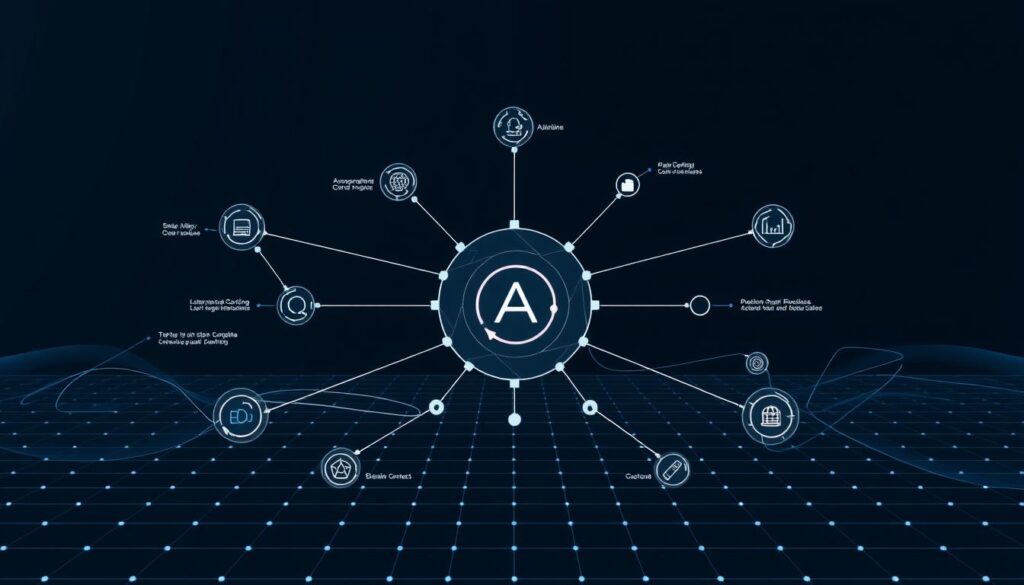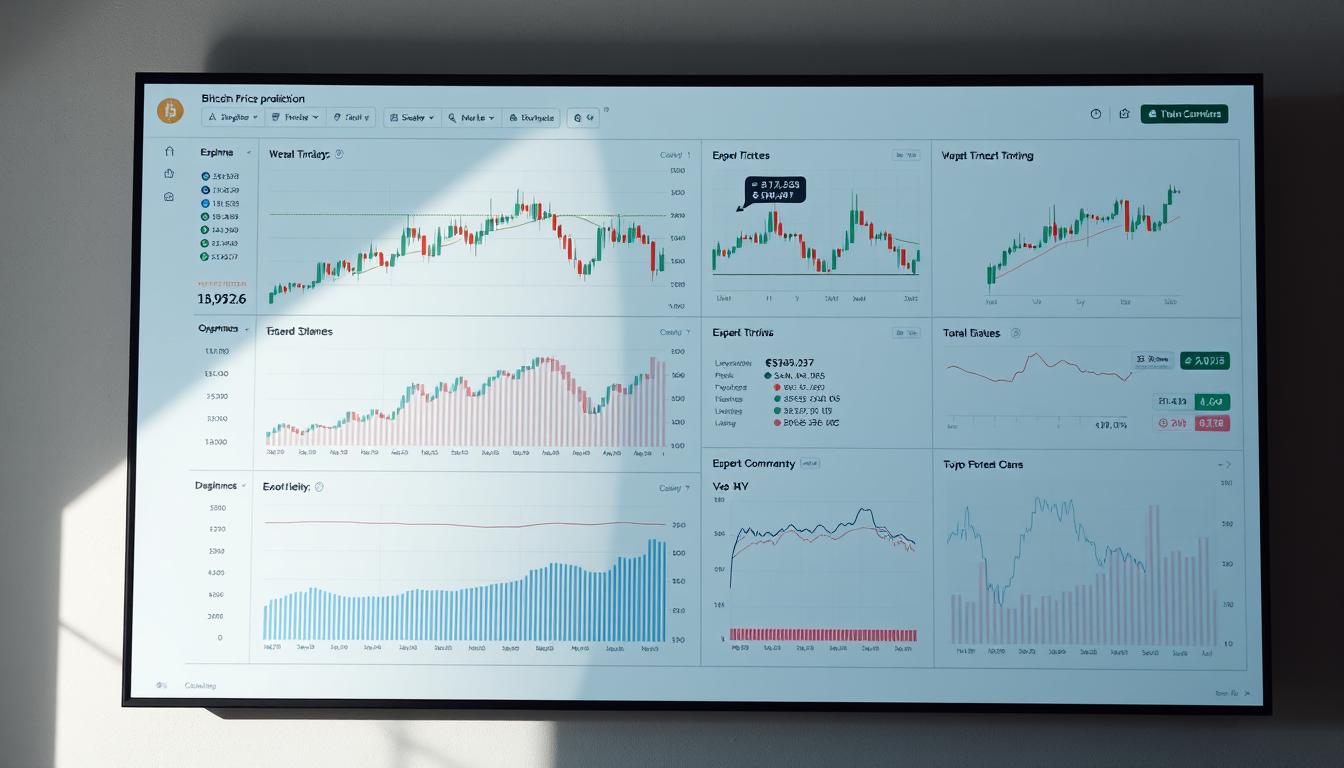Now Reading: Understanding Blockchain layer one protocol foundation
- 01
Understanding Blockchain layer one protocol foundation
Understanding Blockchain layer one protocol foundation

Imagine building a house without a solid foundation. The entire structure would be unstable and unsafe. This same principle applies to the digital world of decentralized networks. The base infrastructure, often called the mainnet, serves as this critical foundation.
This primary network defines the rules that govern all operations. It processes and finalizes transactions directly on its own chain. Everything built on top relies on this bedrock for stability and trust.
These core systems must balance three essential principles. Decentralization ensures no single entity has control. Security protects against attacks and maintains integrity. Scalability allows the network to grow and handle increasing demand.
Understanding this fundamental layer is crucial for anyone exploring digital assets or decentralized applications. It’s the starting point for comprehending how these innovative networks operate and evolve.
Key Takeaways
- Layer 1 serves as the main infrastructure where transactions are processed and finalized
- This base network acts as the ultimate source of truth for all activities
- Three core principles must be balanced: decentralization, security, and scalability
- The foundation must be solid to support everything built upon it
- Understanding this layer is essential for comprehending how decentralized networks function
- These systems define the rules and protocols governing all operations
- The mainnet validates and records transactions directly on the primary ledger
Overview of Blockchain Technology and Layers
The architecture of contemporary peer-to-peer systems relies on multiple interconnected tiers working in harmony. These digital platforms organize their operations through distinct levels that each handle specific functions.
Defining Blockchain Layers
Distributed ledger systems typically operate across five main levels. Level 0 provides the underlying infrastructure that enables cross-chain communication between different networks.
The primary network, known as level 1, serves as the main operational base. It processes all on-chain transactions and maintains the permanent record.
Overlay networks built on top constitute level 2 solutions. These focus primarily on scaling and improving transaction efficiency. Level 3 supports application-specific chains, while level 4 handles user-facing interfaces.
History and Evolution of Blockchain
The first major distributed network emerged in 2009 as a simple payment system. This pioneering platform established the basic concept of a decentralized ledger.
In 2015, a significant advancement introduced programmable contracts to these systems. This innovation expanded their capabilities beyond simple transactions.
Recent years have seen the development of high-performance main networks. The entire ecosystem has evolved from basic payment systems to complex platforms supporting diverse applications.
Blockchain Layer One Protocol Foundation in Focus
Digital asset networks derive their power from a base infrastructure that establishes all governing rules. This primary tier operates independently, creating its own operational framework without external dependencies.
These systems function as self-sufficient environments with complete control over their validation processes. They maintain permanent records that serve as the definitive truth for all network participants.
Key Concepts and Core Value
The fundamental value of these base networks lies in their triple foundation of essential properties. Each property contributes to the system’s overall reliability and performance.
Cryptographic techniques provide robust protection against unauthorized access and fraudulent activities. Distributed node participation ensures no single point of control exists within the ecosystem.
The capacity to handle increasing transaction volume represents another critical aspect. This growth potential determines how effectively the system can expand to meet user demand.
| Core Value | Implementation Method | Primary Benefit |
|---|---|---|
| Network Protection | Cryptographic protocols | Prevents fraudulent transactions |
| Distributed Control | Multiple validation nodes | Eliminates central authority |
| Growth Capacity | Optimized transaction processing | Supports increasing user base |
Applications built upon these foundations depend entirely on the underlying system’s strength. The balance between these three core values remains a significant challenge for developers.
Key Components of a Layer 1 Blockchain
Core architectural components form the backbone of self-governing digital ecosystems. These elements work together to create independent networks that process transactions securely.
Each main network operates through interconnected parts that ensure reliability. The system maintains complete control over its operations without external help.
Nodes and Decentralization
Distributed computers called nodes maintain the entire transaction history. This setup prevents single points of failure across the ecosystem.
Thousands of independent operators share validation responsibilities. They receive incentives for contributing computational resources to secure the network.
Native Cryptocurrencies and Protocol Rules
Each system issues its own digital token that serves multiple purposes. This currency pays transaction fees and rewards participants for their work.
Embedded rules govern everything from block creation to system upgrades. These protocols establish how the network reaches agreement on valid transactions.
| Component | Primary Function | Network Impact |
|---|---|---|
| Validation Nodes | Process and verify transactions | Ensures distributed control |
| Native Token | Powers network operations | Incentivizes participation |
| Consensus Rules | Coordinates node agreement | Maintains system integrity |
These elements create a synergistic relationship that supports secure, decentralized operations. The balance between components determines the network’s overall performance and reliability.
Understanding Consensus Mechanisms and Security
How do decentralized networks worldwide reach agreement without a central authority? This challenge is solved by specialized decision-making processes. These systems enable thousands of computers to synchronize their records securely.
Different approaches create distinct security models across various platforms. The choice fundamentally shapes a network’s protection, efficiency, and decentralization characteristics.
Proof of Work vs. Proof of Stake
Proof of Work relies on miners solving complex mathematical puzzles. This energy-intensive process provides exceptional security through computational effort.
Proof of Stake selects validators based on their cryptocurrency stake. This approach reduces energy consumption by approximately 99.95% while maintaining protection.
Each mechanism represents a different trade-off between security, scalability, and decentralization. Major networks have adopted both approaches with success.
| Consensus Mechanism | Security Model | Energy Impact |
|---|---|---|
| Proof of Work | Computational power requirement | High energy consumption |
| Proof of Stake | Economic stake collateral | Minimal energy usage |
| Delegated Proof of Stake | Elected validator groups | Moderate efficiency |
| Byzantine Fault Tolerance | Malicious actor resistance | Variable based on implementation |
Security Implications for Blockchains
Proof of Work protection comes from the enormous cost of attacking the network. An attacker would need to control more than half the mining power.
Proof of Stake security relies on validators locking significant cryptocurrency as collateral. Malicious behavior results in losing this stake through “slashing.”
Alternative mechanisms like Proof of History and Proof of Authority offer different security profiles. Each creates unique economic incentives that maintain network integrity.
Scalability: Overcoming the Blockchain Trilemma
The pursuit of optimal performance in digital networks reveals an inherent limitation known as the scalability trilemma. This concept, identified by Ethereum’s Vitalik Buterin, suggests that systems cannot simultaneously achieve maximum scalability, security, and decentralization.
Managing Transaction Throughput
Scalability is typically measured in transactions per second. Major networks process vastly different volumes. Bitcoin handles around 7 transactions per second, while Ethereum processes approximately 15.
Traditional payment systems like Visa demonstrate the gap, handling thousands of transactions every second. This difference highlights the scalability challenge facing distributed networks.
Addressing Network Congestion
When transaction demand exceeds processing capacity, networks experience congestion. This creates competition among users who must pay higher fees for priority processing.
During peak usage periods, transaction costs can increase dramatically. This economic mechanism helps manage limited network resources effectively.
Exploring the Scalability Trilemma
Each primary network makes distinct choices when facing the trilemma. Bitcoin prioritizes security and decentralization, accepting limited scalability as a trade-off.
Ethereum attempts to balance all three characteristics through ongoing upgrades. Solana emphasizes scalability and security with some decentralization compromises.
| Network | Scalability Approach | Security Model | Decentralization Level |
|---|---|---|---|
| Bitcoin | Limited transactions per second | Proof of Work | Highly decentralized |
| Ethereum | Ongoing scalability improvements | Proof of Stake | Moderately decentralized |
| Solana | High transaction throughput | Proof of History | Less decentralized |
Smart Contracts and Decentralized Applications on Layer 1
Self-executing code has transformed basic transaction networks into full-fledged application platforms. These programmable agreements represent one of the most significant innovations in distributed systems technology.

Ethereum pioneered this concept in 2015, moving beyond simple cryptocurrency payments. Its introduction of programmable logic expanded what decentralized networks could accomplish.
Role of Smart Contracts in dApps
Smart contracts are self-executing programs that automatically verify transactions when pre-set conditions are met. They serve as the foundation for decentralized applications, enabling complex automated workflows.
These digital contracts run exactly as programmed without requiring intermediaries. Ethereum’s Turing-complete programming language, Solidity, allows developers to build versatile and sophisticated agreements.
The platform supports a vast ecosystem of applications across multiple sectors. Decentralized Finance enables lending and trading without traditional institutions. NFTs represent unique digital asset ownership on the network.
Gaming applications leverage blockchain for verifiable ownership and in-game economies. Social networks built on this technology offer censorship-resistant communication platforms.
The security and reliability of all these applications depend entirely on the underlying network’s robustness. This makes the base infrastructure critically important for everything built upon it.
A Comparative Analysis: Bitcoin, Ethereum, and Beyond
Major primary networks demonstrate varying trade-offs in their architectural designs. Bitcoin and Ethereum represent the established pioneers in this space.
Bitcoin as a Benchmark
Bitcoin operates as the original and most secure platform. Its proof-of-work consensus has never been successfully attacked despite massive market capitalization.
This network prioritizes security and decentralization above all else. This results in approximately 7 transactions per second and confirmation times up to an hour.
Ethereum’s Evolution and Upgrades
Ethereum transformed from proof-of-work to proof-of-stake through the Merge. This reduced energy consumption by 99.95% while maintaining security.
The platform hosts thousands of decentralized applications through smart contracts. However, it faces scalability challenges with only 15 transactions per second.
Emerging Alternatives in the Blockchain Space
Newer layer blockchains offer significant performance improvements. Solana processes up to 65,000 transactions per second with low transaction costs.
Cardano validates over 1,000 transactions per second using research-driven proof-of-stake. Algorand employs pure proof-of-stake with random validator selection.
Each platform makes distinct trade-offs optimized for specific use cases. No single solution is objectively best for all applications.
Innovative Scalability Solutions: Sharding and Layer 2 Integrations
The quest for higher throughput has led to creative technological breakthroughs that enhance network performance. These approaches maintain security while dramatically increasing transaction capacity.

Understanding Sharding Technologies
Sharding divides a network into smaller segments called shards. Each shard processes transactions independently, boosting overall capacity.
This technique allows parallel processing across multiple chains. Ethereum’s roadmap includes sharding to increase from 15 to thousands of transactions per second.
Overview of Layer 2 Solutions
Layer solutions build atop main networks to handle transactions off-chain. They periodically settle final states back to the secure foundation.
Major types include state channels for off-chain transactions between parties. Rollups bundle many operations for batch processing.
Sidechains run parallel with their own consensus mechanisms. The Lightning Network enables fast Bitcoin transactions, while Polygon scales Ethereum through multiple chains.
These innovative solutions create a complementary relationship where the base provides security and layer solutions deliver scalability.
Energy Consumption and Environmental Impact Considerations
The environmental footprint of digital networks has become a critical discussion point in recent years. Different validation approaches create vastly different energy requirements. This directly impacts their sustainability and public acceptance.
Proof of Work systems require massive computational power to solve complex puzzles. This process consumes electricity comparable to small countries. While providing exceptional security, this energy consumption raises significant environmental concerns.
Sustainable Mining and PoS Benefits
Proof of Stake represents a dramatic improvement in energy efficiency. Validators are chosen based on their staked cryptocurrency rather than computational power. This eliminates energy-intensive mining operations entirely.
Ethereum’s transition to Proof of Stake reduced energy consumption by approximately 99.95%. The network maintained equivalent security through economic incentives. This demonstrates that protection doesn’t require massive energy expenditure.
Newer systems largely adopt energy-efficient consensus mechanisms from inception. Environmental sustainability has become crucial for institutional adoption. The industry continues evolving toward greener validation processes.
The choice of consensus mechanisms profoundly impacts both technical performance and environmental footprint. While Proof of Work provides strong security, Proof of Stake offers comparable protection with minimal energy requirements. This balance will shape future network development.
Transaction Performance: Speed and Costs Explained
Transaction speed and cost represent the most tangible metrics for everyday users of digital networks. These factors directly impact whether a system feels responsive and affordable for regular use.
Performance varies dramatically across different platforms. Some process only a handful of operations each second, while others handle thousands simultaneously.

Evaluating Transactions Per Second and Fees
Transaction throughput measures how many operations a network can handle every second. This capacity ranges from Bitcoin’s 7 transactions to Solana’s impressive 65,000.
Fees serve dual purposes: compensating validators and preventing spam attacks. During peak demand, costs can increase dramatically as users compete for limited space.
Faster confirmation times create smoother user experiences. While some networks confirm in seconds, others may require an hour for final settlement.
| Platform | Transactions Per Second | Typical Confirmation Time | Fee Structure |
|---|---|---|---|
| Bitcoin | ~7 | 10-60 minutes | Market-based fees |
| Ethereum | ~15 | 15 seconds – 5 minutes | Gas fees based on complexity |
| Cardano | ~1,000+ | 5-10 minutes | Fixed fee per transaction |
| Solana | ~65,000 | 2-5 seconds | Very low fixed fees |
Lower transaction costs and improved scalability make networks more accessible. This balance between speed and affordability determines practical usability for applications like micropayments and frequent trading.
Interoperability and Cross-chain Communication in Blockchain Networks
As decentralized systems multiply, the challenge of communication between separate networks becomes increasingly critical. Currently, many digital ledgers operate like isolated islands with limited interaction capabilities.
This fragmentation restricts the potential of the entire digital ecosystem. Achieving seamless connectivity across multiple platforms represents a major development priority.
Bridges and Cross-chain Protocols
Specialized technologies enable communication between different networks. Bridges lock assets on one chain while minting equivalent tokens on another.
Cross-chain protocols create standardized frameworks for interaction. Polkadot connects parachains, while Cosmos uses Inter-Blockchain Communication.
Avalanche supports customizable subnets that can interoperate. These solutions face security challenges but enable vital connectivity.
| Interoperability Solution | Primary Function | Key Feature |
|---|---|---|
| Bridge Protocols | Asset transfer between chains | Token locking and minting |
| Polkadot Network | Parachain connectivity | Shared security model |
| Cosmos Ecosystem | Independent chain communication | IBC protocol standard |
| Avalanche Subnets | Customizable interoperability | Multiple virtual machines |
Benefits of a Connected Ecosystem
Interoperability dramatically increases liquidity across multiple platforms. Assets can flow freely between different networks.
This connectivity enables expanded use cases and innovation. Developers can leverage unique features from various systems.
Users experience seamless access to services across chains. The entire ecosystem becomes more versatile and powerful.
Emerging Projects in the Blockchain Space
New generation platforms are pushing the boundaries of what’s possible in distributed systems. These innovative layer blockchains introduce fresh approaches to solving traditional limitations.

Innovative Layer 1 Projects to Watch
Sui delivers exceptional transaction throughput with minimal latency. This robust platform handles complex applications efficiently.
Sei Network specializes in trading and financial applications. It provides rapid transaction finality for time-sensitive operations.
Quai Network employs a unique hierarchical structure. This design enhances scalability while maintaining distributed control.
Kaspa achieves remarkable speed using Proof-of-Work consensus. It confirms transactions in seconds despite traditional limitations.
Celestia separates consensus from execution layers. This modular approach offers developers unprecedented flexibility.
Upcoming Trends and Market Innovations
NEON combines Ethereum compatibility with Solana’s performance. This bridge between ecosystems creates powerful hybrid solutions.
These emerging platforms represent the cutting edge of network innovation. They address scalability challenges with creative architectural solutions.
The continuous evolution of these systems demonstrates ongoing experimentation. Each new project brings specialized optimizations to the space.
Challenges and Future Directions for Layer 1 Protocols
Current primary digital ledgers face a convergence of technical, regulatory, and user experience barriers that must be overcome. These systems continue struggling with fundamental limitations while promising innovations emerge.
Addressing Current Limitations
The blockchain trilemma remains the central challenge for these networks. No system has yet achieved optimal scalability, security, and decentralization simultaneously.
Regulatory uncertainty creates significant hurdles across different jurisdictions. Compliance requirements vary widely for cryptocurrency operations and validators. Interoperability limitations also fragment the entire ecosystem.
Future Technological Innovations
Advanced sharding implementations and novel consensus mechanisms offer promising solutions. Zero-knowledge proof technologies could provide security through cryptography rather than traditional validation.
The future appears increasingly intertwined with layer solutions that complement base networks. This creates architectures where foundational systems provide security while secondary layers handle scalability.
Continued innovation in the blockchain space will determine whether these protocols can achieve global-scale adoption. Balancing limitations with core principles represents the central challenge ahead.
Conclusion
Primary digital networks represent more than technical systems—they are platforms for global economic transformation. These foundational technologies enable developers to build decentralized applications that reshape industries worldwide.
The ongoing evolution of layer blockchains continues to expand what’s possible in digital systems. Each platform makes strategic choices balancing security, scalability, and decentralization. These decisions fundamentally shape all applications built upon them.
The diverse blockchain ecosystem offers specialized solutions for different needs. Understanding these core technologies remains essential for participation in the digital economy.
Despite current limitations, these innovations hold tremendous potential. They may transform finance, governance, and countless other sectors in the years ahead.
FAQ
What is the main difference between a Layer 1 and a Layer 2 solution?
A Layer 1 solution refers to the base network, like Bitcoin or Ethereum, which has its own consensus mechanism and native token. A Layer 2 solution is built on top of a Layer 1 to improve its performance, handling multiple transactions off-chain to increase speed and reduce transaction costs before settling on the main chain.
Why is scalability such a big challenge for networks like Ethereum?
Scalability is a major hurdle because of the blockchain trilemma, which suggests it’s difficult to achieve high decentralization, security, and scalability simultaneously. As more decentralized applications are built, network congestion can lead to slower processing times and higher fees for users.
How does Proof of Stake reduce energy consumption compared to Proof of Work?
Proof of Stake validators secure the network by locking up their cryptocurrency instead of using powerful computers to solve complex puzzles. This shift away from computational mining drastically cuts down on the energy consumption required to maintain the blockchain ecosystem.
What role do smart contracts play in the blockchain space?
Smart contracts are self-executing agreements with terms written directly into code. They are the foundation for decentralized applications, enabling everything from decentralized finance to digital collectibles without needing a middleman to process transactions.
What is sharding, and how does it help a blockchain network?
Sharding is a technique that splits a blockchain into smaller, more manageable pieces called shards. Each shard processes its own transactions and smart contracts, which allows the network to handle more activity in parallel, significantly boosting overall transactions per second.
What is interoperability, and why is it important for the future of blockchain networks?
Interoperability is the ability of different blockchain networks to communicate and share information. Protocols and bridges that enable this create a more connected ecosystem, allowing assets and data to move freely across multiple chains, which increases utility for users and developers.















